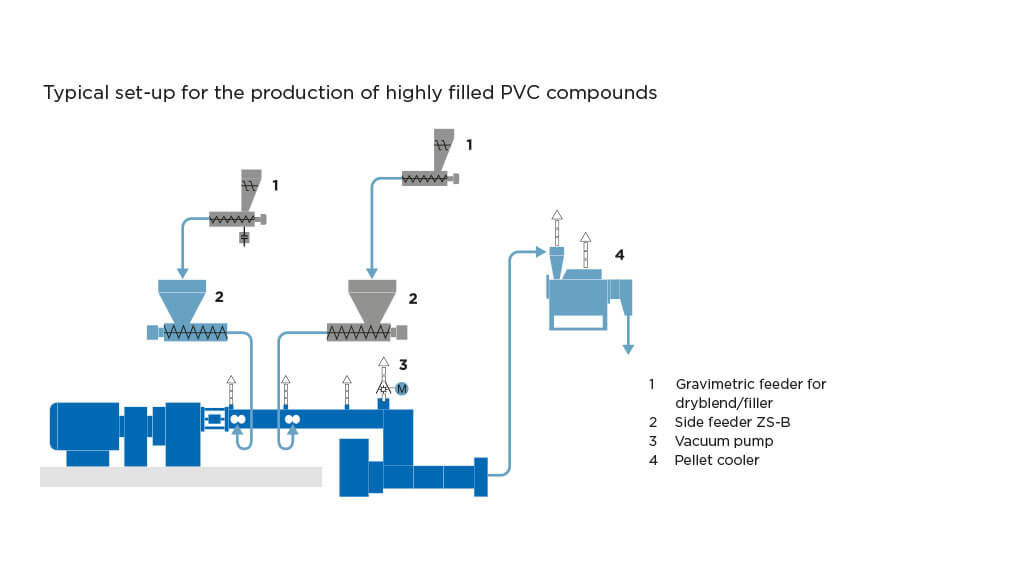PVC has a greater variety of formulation options than virtually any other thermoplastic polymer. Slight changes in additives, plasticizer and filler composition strongly influence the properties of the compound. However, the common denominator for all PVC formulations is that they need gentle processing in order to avoid excessive plastification or even degradation. Naturally, besides the necessity to create high quality products the main focus in PVC processing is on economic efficiency.
With its Kombiplast Coperion offers a very flexible two-stage system for PVC processing meeting both high quality products manufactured at high economic efficiency. In order to pelletize the PVC it has to pass a die plate. As the comparably high backpressure in the compounder simultaneously creates a high product temperature, Coperion’s Kombiplast decouples the two process steps of plastification/ homogenization and pressure build up before the die plate. The Kombiplast system consists of a co-rotating twin screw extruder ZSK for compounding and a single screw extruder (ES-A) in which the pressure build up before the die plate is realized very gently. The strands are cut into pellets by Coperion’s eccentric hot face pelletizer (EGR). The new design of the knife rotor allows for an almost complete elimination of fines during the cutting process.
The process section of the ZSK extruder has a modular design consisting of individual barrels and screw elements aligned on screw shafts. Hence, the set-up of the machine can be easily adapted to the requirements of the products. With an optimized configuration of the barrels and especially the screws a large variety of formulations can be run without any changes in the set-up.



